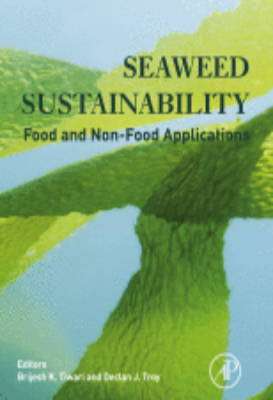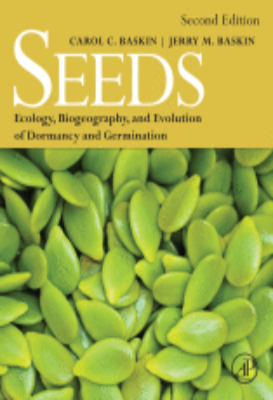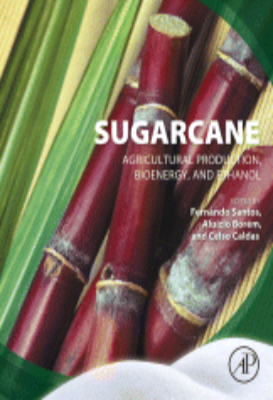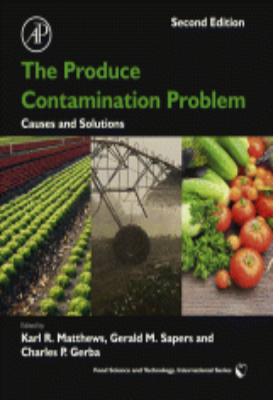E-Resources
Seaweed Sustainability
"Seaweed Sustainability: Food and Non-Food Applications is the only evidence-based resource that offers an abundance of information on the applications of seaweed as a solution to meet an increasing global demand for sustainable food source. The book uncovers seaweed potential and describes the various sources of seaweed, the role of seaweeds as a sustainable source for human food and animal feeds, and the role of seaweed farming for sustainability. In addition to harvesting and processing information, the book discusses the benefits of seaweed in human nutrition and its nutraceutical properties. Key Features. Offers different perspectives by presenting examples of commercial utilization of wild-harvested or cultivated algae, marine and freshwater seaweeds. Discusses seasonal and cultivar variations in seaweeds for a better understanding of their implications in commercial applications. Includes a wide range of micro and macro algae for food and feed production and provides perspectives on seaweed as a potential energy source"
Seeds
"The new edition of Seeds contains new information on many topics discussed in the first edition, such as fruit/seed heteromorphism, breaking of physical dormancy and effects of inbreeding depression on germination. New topics have been added to each chapter, including dichotomous keys to types of seeds and kinds of dormancy; a hierarchical dormancy classification system; role of seed banks in restoration of plant communities; and seed germination in relation to parental effects, pollen competition, local adaption, climate change and karrikinolide in smoke from burning plants. The database for the world biogeography of seed dormancy has been expanded from 3,580 to about 13,600 species. New insights are presented on seed dormancy and germination ecology of species with specialized life cycles or habitat requirements such as orchids, parasitic, aquatics and halophytes. Information from various fields of science has been combined with seed dormancy data to increase our understanding of the evolutionary/phylogenetic origins and relationships of the various kinds of seed dormancy (and nondormancy) and the conditions under which each may have evolved. This comprehensive synthesis of information on the ecology, biogeography and evolution of seeds provides a thorough overview of whole-seed biology that will facilitate and help focus research efforts. Key Features. Most wide-ranging and thorough account of whole-seed dormancy available. Contains information on dormancy and germination of more than 14,000 species from all the continents even the two angiosperm species native to the Antarctica continent. Includes a taxonomic index so researchers can quickly find information on their study organism(s) and. Provides a dichotomous key for the kinds of seed dormancy. Topics range from fossil evidence of seed dormancy to molecular biology of seed dormancy. Much attention is given to the evolution of kinds of seed dormancy. Includes chapters on the basics of how to do seed dormancy studies; on special groups of plants, for example orchids, parasites, aquatics, halophytes; and one chapter devoted to soil seed banks. Contains a revised, up-dated classification scheme of seed dormancy, including a formula for each kind of dormancy. Detailed attention is given to physiological dormancy, the most common kind of dormancy on earth"
Sugarcane
"Sugarcane: Agricultural Production, Bioenergy and Ethanol explores this vital source for ""green"" biofuel from the breeding and care of the plant all the way through to its effective and efficient transformation into bioenergy. The book explores sugarcane's 40 year history as a fuel for cars, along with its impressive leaps in production and productivity that have created a robust global market. In addition, new prospects for the future are discussed as promising applications in agroenergy, whether for biofuels or bioelectricity, or for bagasse pellets as an alternative to firewood for home heating purposes are explored. Experts from around the world address these topics in this timely book as global warming continues to represent a major concern for both crop and green energy production. Key Features. Focuses on sugarcane production and processing for bioenergy. Provides a holistic approach to sugarcanes potential from the successful growth and harvest of the plant to the end-use product. Presents important information for ""green energy"" options"
The Agronomy and Economy of Important Tree Crops of the Developing World
"Major tree crops contribute substantially to the economy of many developing countries on the Asian, African and Latin American continents. For example, coffee is the main revenue earner for Kenya. This book provides a comprehensive review of the agronomy, botany, taxonomy, genetics, chemistry, economics, and future global prospects of a range of crops that have great food, industrial and economic value such as cocoa, coffee, cashew, oil palm and natural rubber. Key Features. Discusses the major tree crops of great economic value to the developing world. The author is an eminent scientist who has won numerous awards for his work in this area"
The Agronomy and Economy of Turmeric and Ginger
"Turmeric has been used as a medicine, a condiment, and a dye since at least 600 B.C., while ginger has been used extensively throughout history for its medicinal purposes. The Agronomy and Economy of Turmeric and Ginger brings these two important plants together in one reference book, explaining their history, production techniques, and nutritional and medicinal properties in detail. This book is intuitively organized by plant and use, allowing quick access to information. It puts the uniquely Indian use and history of turmeric and ginger plants into a global context of production and economic aspects. It explores the plants from a botanical perspective, and goes into details of their chemical composition as well. Rounding out the book are chapters on disease and pest control issues. The book is a valuable resource for those involved in the production and marketing of these plants, as well as those looking for more information on the medicinal and nutritional properties of turmeric and ginger. Key Features. The first book to bring together extensive information about turmeric and ginger. Incorporates medicinal, nutritional and agricultural aspects of the two plants. Offers a global perspective"
The International Cocoa Trade
"An overview of the history of cocoa, the factors affecting its production and consumption as well as how the trade is conducted, various risks mitigated, and by whom. The International Cocoa Trade is a work designed to inform all on the subject of cocoa and an essential guide for those involved in its trade.Dr J. Vingerhoets, Executive Director, ICCOCocoa is a valuable commodity, and the cocoa trade involves many different parties from growers and exporters through dealers and factories to those trading futures and options and the banks they deal with. The International Cocoa Trade provides an authoritative and comprehensive review of the cocoa trade at the beginning of the twenty-first century, and the main factors that drive and affect that business.The opening chapter of the third edition examines the history and origins of the international cocoa trade, and its recent developments. The agronomics of cocoa production are discussed in chapter two whilst chapter three deals with the environmental and practical factors affecting cocoa production. Chapters four, five and six cover issues around the export and trading of physical cocoa, including the actuals market, the physical contracts used and the futures and options markets. In chapter seven, the international consumption and stocks of cocoa are reviewed with chapter eight discussing the issue of quality assessment of cocoa beans for international trade. Finally, chapter nine focuses on the end product, examining the processing of cocoa beans and the manufacture of chocolate. Updated appendices provide copies of some of the most important documents used in the cocoa trade, including contracts, sale rules and world production statistics.This comprehensively updated third edition of The International Cocoa Trade ensures its continued status as the standard reference for all those involved in the production consumption and international trading of cocoa. Key Features. Provides an authoritative and comprehensive review of the cocoa trade at the beginning of the twenty-first century, and the main factors that drive and affect that business. Examines the history and origins of the international cocoa trade, and its recent developments featuring a discussion of environmental and practical factors affecting cocoa production. Explores issues concerning the export and trading of physical cocoa, including the actuals market, the physical contracts used and the futures and options markets
The Produce Contamination Problem: 2014
"Understanding the causes and contributing factors leading to outbreaks of food-borne illness associated with contamination of fresh produce is a worldwide challenge for everyone from the growers of fresh-cut produce through the entire production and delivery process. The premise of The Produce Contamination Problem is that when human pathogen contamination of fresh produce occurs, it is extremely difficult to reduce pathogen levels sufficiently to assure microbiological safety with the currently available technologies. A wiser strategy would be to avoid crop production conditions that result in microbial contamination to start. These critical, problem-oriented chapters have been written by researchers active in the areas of food safety and microbial contamination during production, harvesting, packing and fresh-cut processing of horticultural crops, and were designed to provide methods of contamination avoidance. Coverage includes policy and practices in the United States, Mexico and Central America, Europe, and Japan. Key Features. Addresses food-borne contaminations from a prevention view, providing proactive solutions to the problems. Covers core sources of contamination and methods for identifying those sources. Includes best practice and regulatory information"
The Science of Grapevines
"The Science of Grapevines: Anatomy and Physiology is an introduction to the physical structure of the grapevine, its various organs, their functions and their interactions with the environment. Beginning with a brief overview of the botanical classification (including an introduction to the concepts of species, cultivars, clones, and rootstocks), plant morphology and anatomy, and growth cycles of grapevines, The Science of Grapevines covers the basic concepts in growth and development, water relations, photosynthesis and respiration, mineral uptake and utilization, and carbon partitioning. These concepts are put to use to understand plant-environment interactions including canopy dynamics, yield formation, and fruit composition, and concludes with an introduction to stress physiology, including water stress (drought and flooding), nutrient deficiency and excess, extreme temperatures (heat and cold), and the impact and response to of other organisms. Based on the authors years of teaching grapevine anatomy as well as his research experience with grapevines and practical experience growing grapes, this book provides an important guide to understanding the entire plant. Key Features. Chapter 7 broken into two chapters, now ""Environmental Constraints and Stress Physiology and Chapter 8 ""Living with Other Organisms"" to better reflect specific concepts. Integration of new research results including:. Latest research on implementing drip irrigation to maximize sugar accumulation within grapes. Effect of drought stress on grapevines hydraulic system and options for optimum plant maintenance in drought conditions. The recently discovered plant hormone strigolactones and their contribution of apical dominance that has suddenly outdated dogma on apical dominance control. Chapter summaries added. Key literature references missed in the first edition as well as references to research completed since the 1e publication will be added"
The Science of Grapevines: Anatomy and Physiology
Written by a recognized expert and based on his experience in teaching the subject to students with a variety of educational backgrounds, The Science of Grapevines: Anatomy and Physiology is the only book to comprehensively explore the physiology of the grapevine as it occurs around the world.While other books have focused on the vines of specific regions, the globalization of the wine industry and the resulting increase of lands around the world being used for grapevine cultivation have left a gap in information. This book addresses not only the specific issues and concerns of grapevines from regions around the world, but includes important emerging topics such as global climate change, water relations, temperature effect and more. Key Features * Provides global coverage of grapevines, including the regional differences, similarities, challenges and potential changes* Avoids jargon while bringing the reader into this important aspect of the wine industry * Classroom proven by a leading expert in grapevine anatomy
Tomato Diseases
"Following the successful first edition, this revised edition, contains 680 pages and 900 color photos and diagrams, covering every imaginable symptom, pest and disease affecting the tomato. This is the definitive work on the diseases and disorders of the tomato, a worldwide crop of significant economic importance. Key Features. Includes over 300 high quality colour photographs. Explains how to examine and identify diseases of the foliage, roots, neck, stalk and fruit. Enables readers to diagnose and combat both parasitic and non-parasitic diseases of the tomato plant and fruit"
Tracing Pathogens in the Food Chain
"Successful methods for the detection and investigation of outbreaks of foodborne disease are essential for ensuring consumer safety. Increased understanding of the transmission of pathogens in food chains will also assist efforts to safeguard public health. Tracing pathogens in the food chain reviews key aspects of the surveillance, analysis and spread of foodborne pathogens at different stages of industrial food production and processing. Part one provides an introduction to foodborne pathogen surveillance, outbreak investigation and control. Part two concentrates on subtyping of foodborne pathogens, with chapters on phenoytypic subtyping and pulsed-field gel electrophoresis, as well as emerging methods. The vital topics of method validation and quality assurance are also covered. The focus in Part three is on particular techniques for the surveillance and study of pathogens, such as protein-based analysis, ribotyping and comparative genomics. Finally, Part four focuses on tracing pathogens in specific food chains, such as red meat and game, dairy, fish and shellfish. With its distinguished editors and international team of contributors, Tracing pathogens in the food chain is a standard reference for researchers, public health experts and food industry professionals concerned with the study and control of foodborne disease. Key Features. Reviews key aspects of the surveillance, analysis and spread of foodborne pathogens. Provides an overview of method validation and quality assurance. Examines the tracing of pathogens in specific food chains, such as red meat, game and dairy"











